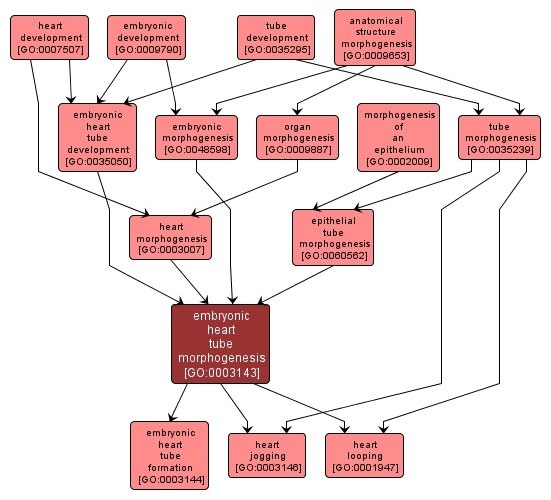GO TERM SUMMARY
|
| Name: |
embryonic heart tube morphogenesis |
| Acc: |
GO:0003143 |
| Aspect: |
Biological Process |
| Desc: |
The process by which the anatomical structures of the embryonic heart tube are generated and organized. Morphogenesis pertains to the creation of form. The embryonic heart tube is an epithelial tube that will give rise to the mature heart. |
|

|
INTERACTIVE GO GRAPH
|














